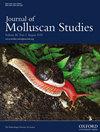利用历史数据和形态计量学工具评估潮间带腹足类动物长期采收的形态影响
IF 1.2
4区 生物学
Q2 MARINE & FRESHWATER BIOLOGY
引用次数: 3
摘要
选择大小的潮间带软体动物是一种常见的做法。然而,长期传统采伐的影响仍不清楚。平均壳尺寸的变化通常被认为是收获强度变化的证据。然而,平均壳尺寸也受到环境压力的影响,这可能会混淆尺寸随时间变化的分析。在本研究中,我们将几何形态计量学应用于两个贝壳丘的历史数据,在进行贝壳尺寸分析之前,试图将Littorina littorea贝壳分类到其环境起源。使用这种方法,壳的形状被发现是一致的内部和中间的位置。根据与已知波浪暴露海岸的现代种群的比较,发现中壳与有遮蔽的海岸更一致,与非常暴露的海岸地点最不同,后者位于中壳遗迹附近。在较近的中巢位置,平均壳尺寸明显较小。我们假设这种减少是由于这一时期收获强度的增加造成的。考虑到贝壳尺寸的微小减小,再加上L. littorea的某些生活史特征,也有可能是环境条件的微小差异造成了贝壳尺寸的变化。使用中壳和形态计量学有可能提供对以前的环境条件和过去的采收实践的洞察,这可能用于为当前的采收实践提供信息。本文章由计算机程序翻译,如有差异,请以英文原文为准。
Assessing the morphological impacts of long-term harvesting in intertidal gastropods using historical data and morphometric tools
Size-selective harvesting of intertidal molluscs is a common practice. However, the effects of long-term traditional harvesting remain unclear. Changes in mean shell size are generally taken as evidence of changes in harvesting intensity. However, mean shell size is also influenced by environmental pressures, which may confound the analysis of size variation over time. In this study, we apply geometric morphometrics to historical data from two shell middens, in an attempt to classify Littorina littorea shells to their environmental origins, prior to carrying out shell size analysis. Using this method, shell shape was found to be consistent within and between the midden sites. Based on comparison with modern populations from shores of known wave exposure, the midden shells were found to be more consistent with sheltered shores, and to differ most from the very exposed shore sites, the latter of which are located adjacent to the midden remains. The mean shell size was significantly smaller in the more recent midden site. We hypothesize this reduction is caused by an increase in harvesting intensity over this period. It is also possible, given the very slight reduction in shell size, coupled with certain life-history traits of L. littorea, that the change in shell size was caused by slight differences in environmental conditions. The use of midden shells and morphometrics has the potential to provide an insight into previous environmental conditions and past harvesting practices, which may be used to inform current harvesting practices.
求助全文
通过发布文献求助,成功后即可免费获取论文全文。
去求助
来源期刊

Journal of Molluscan Studies
生物-动物学
CiteScore
3.00
自引率
8.30%
发文量
36
审稿时长
3 months
期刊介绍:
The Journal of Molluscan Studies accepts papers on all aspects of the study of molluscs. These include systematics, molecular genetics, palaeontology, ecology, evolution, and physiology. Where the topic is in a specialized field (e.g. parasitology, neurobiology, biochemistry, molecular biology), submissions will still be accepted as long as the mollusc is the principal focus of the study, and not incidental or simply a convenient experimental animal. Papers with a focus on fisheries biology, aquaculture, and control of molluscan pests will be accepted only if they include significant advances in molluscan biology. While systematic papers are encouraged, descriptions of single new taxa will only be considered if they include some ‘added value’, for example in the form of new information on anatomy or distribution, or if they are presented in the context of a systematic revision or phylogenetic analysis of the group.
 求助内容:
求助内容: 应助结果提醒方式:
应助结果提醒方式:


